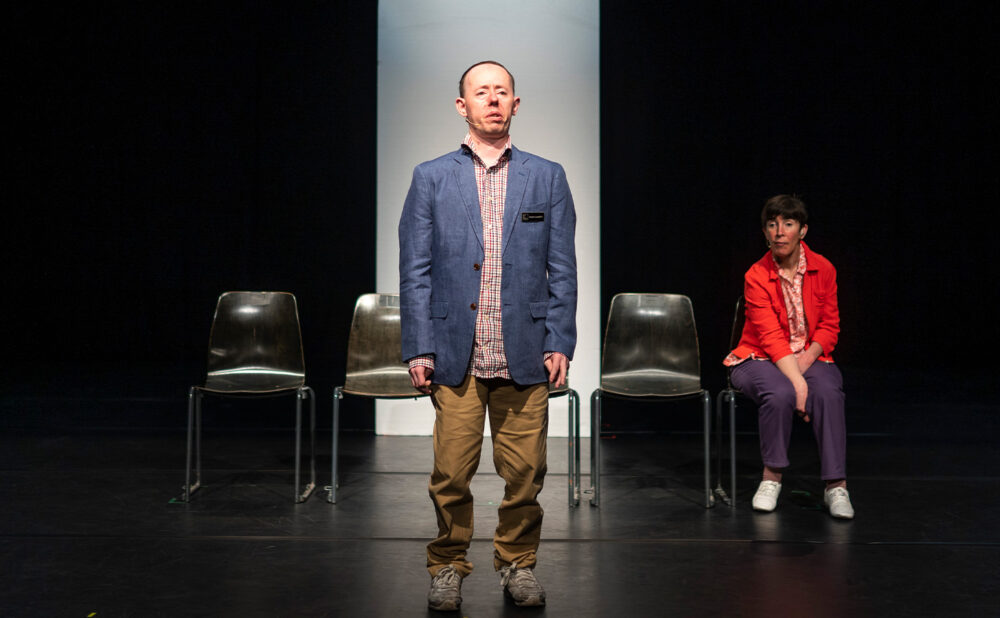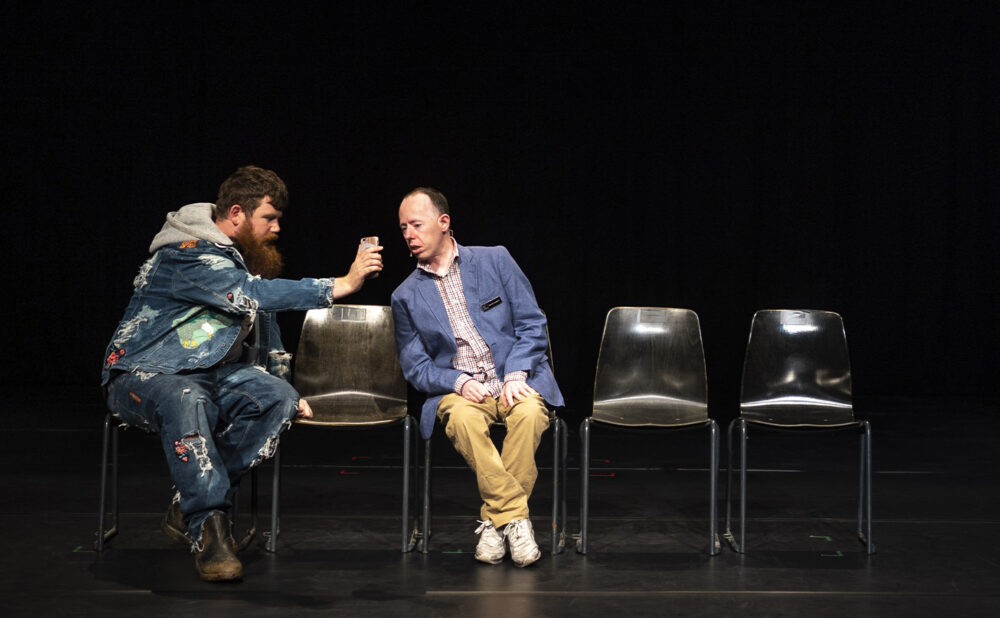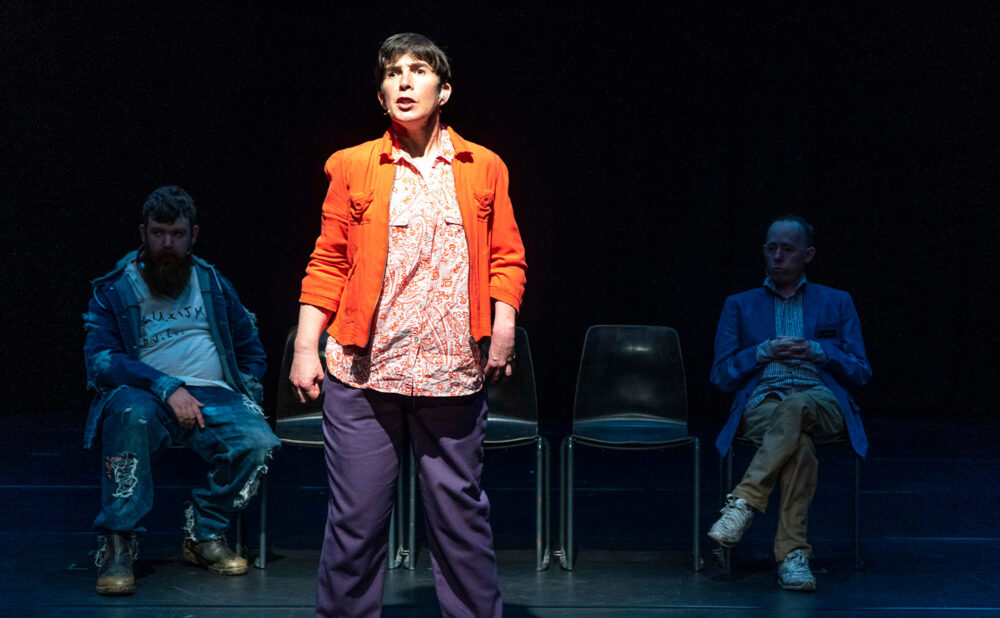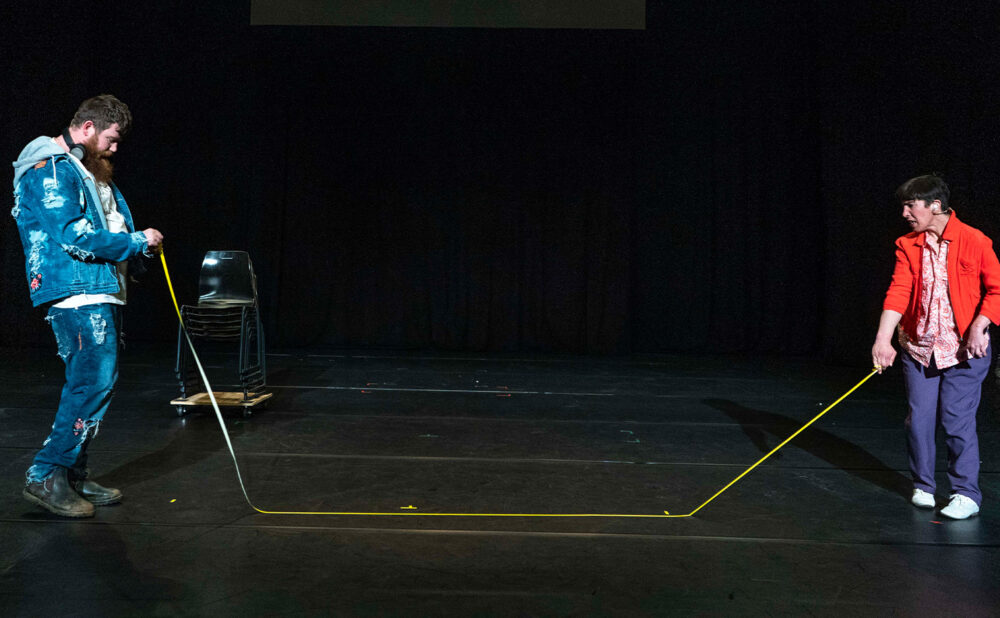Review: ‘The Shadow Whose Prey the Hunter Becomes’ at Canadian Stage is a pointed conversation starter
Economical Back to Back Theatre production raises questions about disability and AI
What: The Shadow Whose Prey the Hunter Becomes
Where: Berkeley Street Theatre, 26 Berkeley St.
When: Now, until Sun., Jan. 28
Highlight: The collectively devised script
Rating: NNNN (out of 5)
Why you should go: Thoughtful play from acclaimed Australian company raises questions without answers, provoking reflection.
CANADIAN PLAYS tend to shout their messages loudly. Playwrights have something to say, and directors ensure it gets heard loud and oh-so clear. There’s no missing the point. None. Understand yet?
Enter The Shadow Whose Prey the Hunter Becomes, a production from Australia’s internationally acclaimed Back to Back Theatre, now on at Canadian Stage. Director Bruce Gladwin’s hour-long devised theatre piece is topical and asks plenty of questions — but, unlike some plays here, it’s sure to stay far away from proclaiming easy answers.
Back to Back Theatre is driven by an ensemble of actors who are perceived to have intellectual disabilities. Likewise, the play is written and performed by neurodivergent actors; on stage are Simon Laherty, Sarah Mainwaring and Scott Price, though many more were involved in the play’s composition.
The play is set at a kind of meeting. A set of dinky chairs occupies centre stage; a metre or so forward, a line of tape separates the playing space from the rest of the Berkeley Street Theatre. At first, this meeting seems to be a fictional one between the three people on stage. But it soon becomes clear that the real encounter is between the audience and the actors: the actors instruct, question and challenge the audience.
If this sounds abstract, well, good. There are characters but they share first names with the actors, lending them an in-between-ness. The show is propelled by a profound fluidity: it could go anywhere, it seems.
And when conflict does eventually arrive, it’s thanks to a surprising source. For the entire show, a monitor hanging above the action provides surtitles, which the characters claim speech-to-text AI is generating live (and indeed, unlike properly calibrated film subtitles, there’s a slight delay between the actors speaking and the transcription appearing on the screen). After 20 or so minutes of the surtitles going unacknowledged, Sarah calls them out, labelling them “offensive”: only English is being spoken, so why should the actors be captioned? Is it just because they’re neurodivergent?
The conversation then turns to AI, with the screen itself defensively chiming in. As the show moves toward its conclusion, it draws a parallel between fears about AI sidelining human intelligence (2001: A Space Odyssey is referred to) and neurodivergent folks’ experience of already being treated as less than.
Considering its short runtime, I view The Shadow Whose Prey the Hunter Becomes primarily as a conversation starter. This is not a cathartic play or even one that’s always engaging in the moment. And given how fast AI is developing, it’s difficult for a theatre piece to discuss it as precisely as we might like. Instead, the show left me conflicted, eager to unpack what I’d just seen — a lovely effect for a theatrical encounter to have.
Click here for more information.









